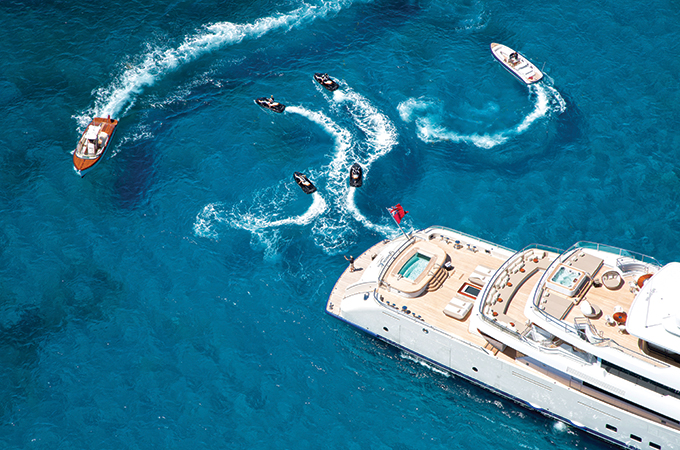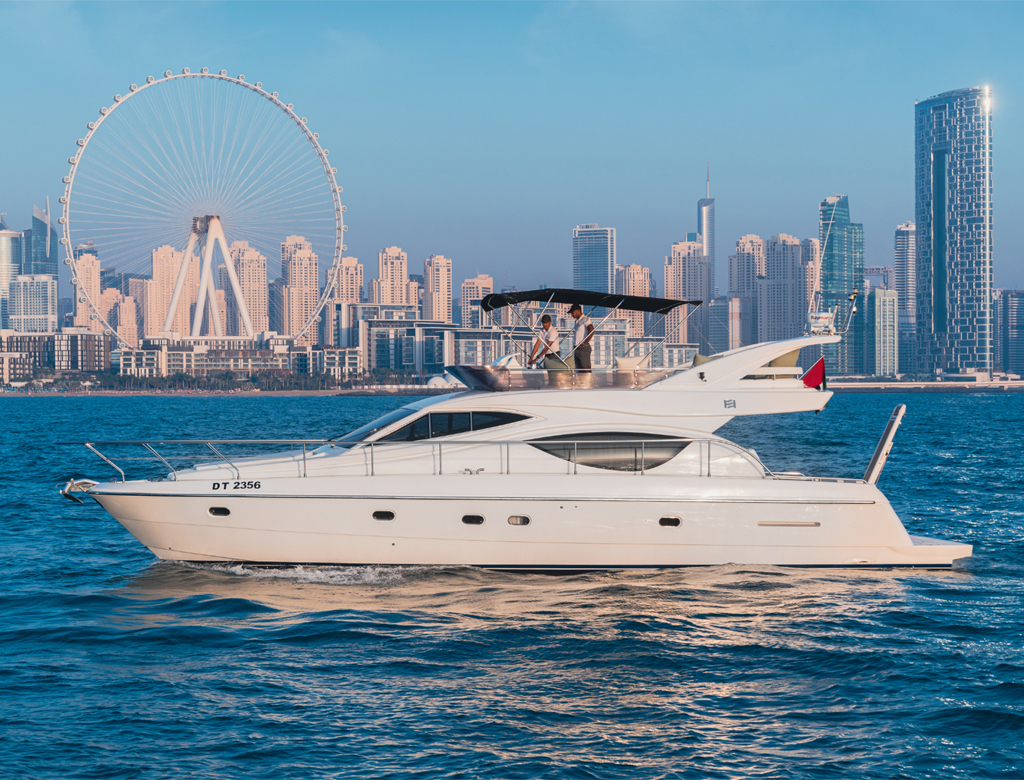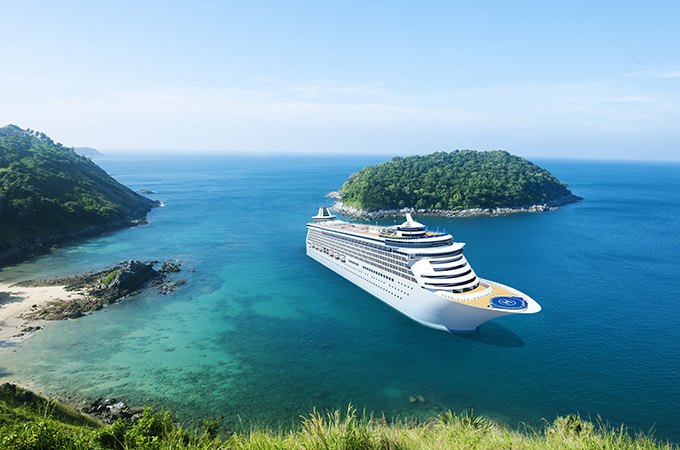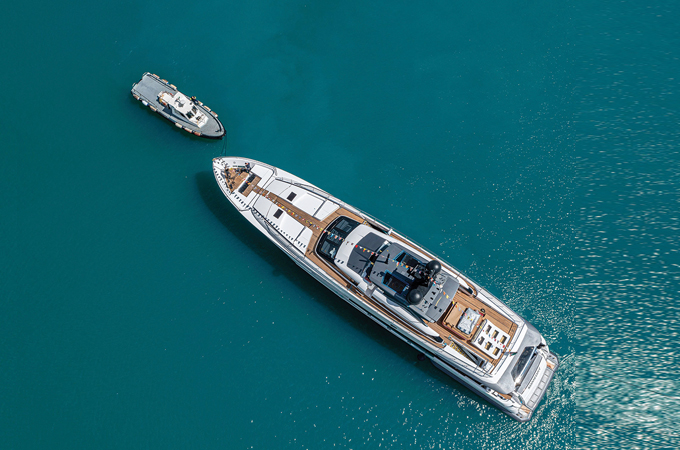Summer 2016
There’s a new normal now for business in the superyacht market, as yachting enthusiasts seek sportier experiences
Prospects for the superyachts industry are looking good with stable sales and healthy orders for new builds, according to superyacht brokerage house Burgess. Talking to Arabian Knight, Alev Karagulle, Director of Marketing & Communications for the UK-based Burgess, also reveals that customers are now demanding sportier and greener yachts, pushing builders to test their limits in design and innovation.
Excerpts of the interview...
What has the market been like over the last year in terms of new orders and sales? Has the industry been affected by the continuing economic gloom across the world?
The sales market has been stable for the last couple of years with approximately $3.45 billion of sales transactions completed per year, which is just over a billion more than sales recorded in 2013. New-build orders are also looking healthy with 431 superyachts currently under construction worldwide and 42 per cent of these are over 45 m. There are also more superyachts over 100 m in build than ever before, although these numbers are relatively small in comparison to the 35-45-m sector which has the greatest volume. While the market today is very different to the landscape of the pre-global financial crisis when prices were over-inflated and demand far outstripped supply, a normality has established itself and trading conditions are healthy.
How many superyachts are there in the world today and how many are available for charter?
There are about 3,700 superyachts of 100-ft-plus in the world today and about 900 of these are available for charter. A typical weekly charter rate is around $250,000 excluding operating expenses (fuel, dockage, food, drinks, taxes) and the discretionary crew gratuity, all of which amount to a further 40-50 per cent of the weekly charter rate. At the very top end of the market, weekly charter rates can exceed well over a million.
Who are today’s yacht buyers; are Middle East clients still key players in the market?
Middle Eastern clients have a keen appetite for superyachting and have always been key players in all sectors of the market – sales, charters and new builds, particularly in the larger size categories. In the aftermath of the 2011 Arab Spring, they were less prominent for a period, but are now active once again.
Russian clients have played a significant role in the market since about 2000, but the geopolitical pressures of the last few years have had a huge impact and there is a marked reduction in the level of Russian business, although the consensus is that the Russians will eventually return to the market. Western Europeans and Americans make up a large proportion of superyacht buyers with the largest share led by the US.
Is the industry seeing a younger generation of enthusiasts?
Yes. With wealth being acquired at a younger age by entrepreneurialism and the advent of technology businesses, superyachting has been attracting a younger generation of people. However, there are around 55,000 individuals globally with a net worth in excess of $115 million and only a fraction of this demographic are involved in superyachting, so there is plenty of scope to introduce more UHNWs (ultra high net worths) to the concept.
Superyachts builders are pushing the boundaries in terms of size, innovation and design. What can we expect in the next few years?
There are a few drivers which are impacting the future direction of superyachts: firstly, the green factor which is already influencing hull design to create visually striking, more environmentally efficient vessels. The 77-m Silver Fast and the 42.5-m trimaran Adastra, while both completely different, illustrate this well.
Secondly, the trend for a ‘sportier’ and healthy living experience on board: closer engagement with the water and water toys, as well as a priority on well-being, which is resulting in large sea level beach clubs with lounging areas and full spa amenities, including gyms. Revaluating lifestyle preferences and the innovative use of materials such as glass is also creating less definition between indoor and outdoor living spaces to really optimise the sense of being on the water.
On-board communications and entertainment systems will continue to develop as people expect state-of-the-art facilities wherever they are cruising and features such as helicopter landing pads and submarine bays may become more prevalent. While there are more 100m+ superyachts in build now than ever before, this represents a small proportion of the overall market and is a very niche sector. Owners upsizing from 60 m seem to be most comfortable with 70 to 85 m as the sweet spot for increasing the scope of possibilities while remaining operationally manageable.
Of course there will always be visionary owners who really make a mark with incredible vessels – for example, the motor yacht A and the sailing yacht A, both designed by Philippe Starck, the 88-m Maltese Falcon with her revolutionary DynaRig and the technically complex 180-m Azzam.
Oceano’s Project Solar – due for launch this year – will feature a host of new, green technology. Is the industry moving towards cleaner solutions?
There is definitely a trend towards more environmentally responsible yachting and reducing the carbon footprint. Fuel-efficient engines with lower consumption levels and reduced emissions, the use of sustainable materials, waste management and systems that don’t harm the ozone layer are all considerations driving shipyards, naval architects and designers in the quest to make yachting more eco-friendly. More efficient hull forms and weight savings resulting in reduced propulsion power and thereby lower fuel consumption can already be seen in a new generation of greener yachts – and this will certainly continue to develop across the board in the production, semi-custom and custom sectors. There are many complexities and high costs involved in developing a green road map within a niche industry like superyachting, so progress is not fast, but the journey has started. Project Solar is likely to be trailblazing as are already the Silver Series, whose DNA is based on long distance cruising capabilities at fast speeds with economic fuel consumption. While green technology like Arcadia’s solar panelling can reduce a yacht’s environmental impact, they’re expensive and the end results are limited.
Does anyone know if Triple Deuce – a proposed 222-m superyacht that made headlines last year – is actually being built?
The consensus by industry experts is that this project is fictitious and construction has not started. Nor has a shipyard yet been commissioned to undertake the build.
Are yachting enthusiasts getting more adventurous?
In some cases, yes. Quite a number of owners with significant yachts have recently undertaken circumnavigations, visiting some extremely remote or unexpected corners of the globe – everywhere from Vanuatu in the South Pacific and Myanmar in the Andaman Sea to Iceland and Scotland. It’s generally – although not always – the younger generation that seem to have the yearning to explore regions that are off the usual superyacht cruising schedule.
Explorer-type yachts which are designed for long distance voyages in unusual locations are ideal for expedition yachting. While features such as ice-class hulls, long range capabilities, self-sufficiency for extended periods of time, helicopter landing (or stowage) facilities and an armada of suitable tenders and watercraft are not important when anchored off Club 55 in St Tropez, they are valuable for adventure cruising. The 107-m explorer yacht Ulysses, which was delivered earlier this year, is heralded as one of the most impressive yachts of this type.
Tell us a bit about the billionaires and celebrities who charter yachts and their favoured destinations.
Discretion is the name of the game in superyachting. Ultra-high net worths and celebrities value the privacy it affords them. The Mediterranean is perennially favoured due to the unique combination of sophisticated dining, shopping and nightlife choices it offers. St Tropez, Monte Carlo, Portofino, Capri, Porto Cervo and Ibiza are top of the list, but Croatia and Montenegro in the Adriatic have also been drawing superyachts over the last few years. Approximately 90 per cent of superyachts can be found in the Mediterranean between May and October.
Which superyachts are most popular on the charter market?
The newest yachts are usually the most popular as are those with comprehensive leisure facilities such as a full inventory of water toys, spa/wellbeing areas with gyms and on-board massage therapists, good beach clubs, large outdoor decks with multiple dining options, media/cinema rooms and so forth. Experienced charterers also seek out yachts with top-notch crews with longevity on the same yacht. Exceptional crews are a major factor for charterers as the crew can make or break the holiday and it is the broker’s role to provide first-hand knowledge and guidance.









.jpg)
.jpg)


.jpg)






